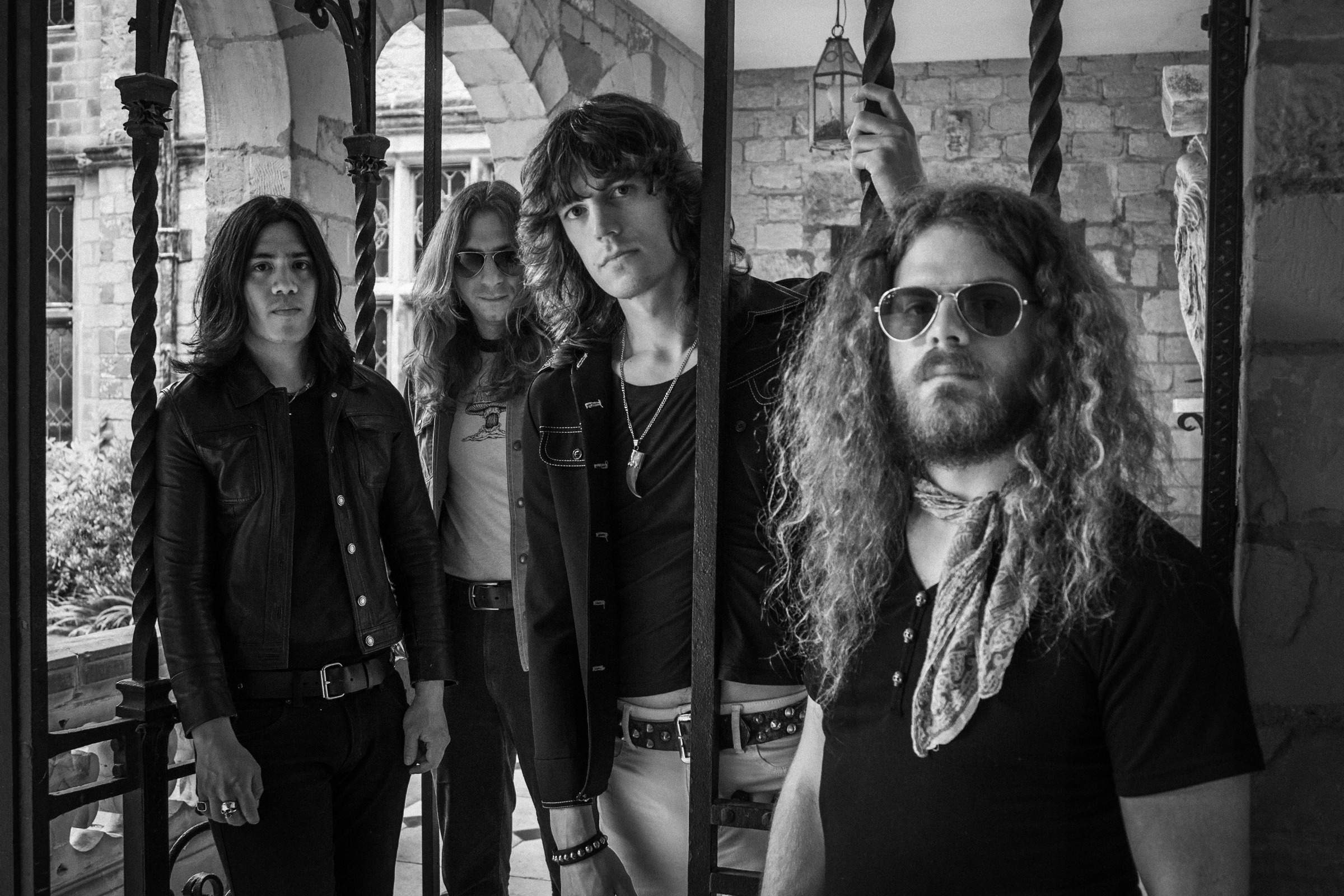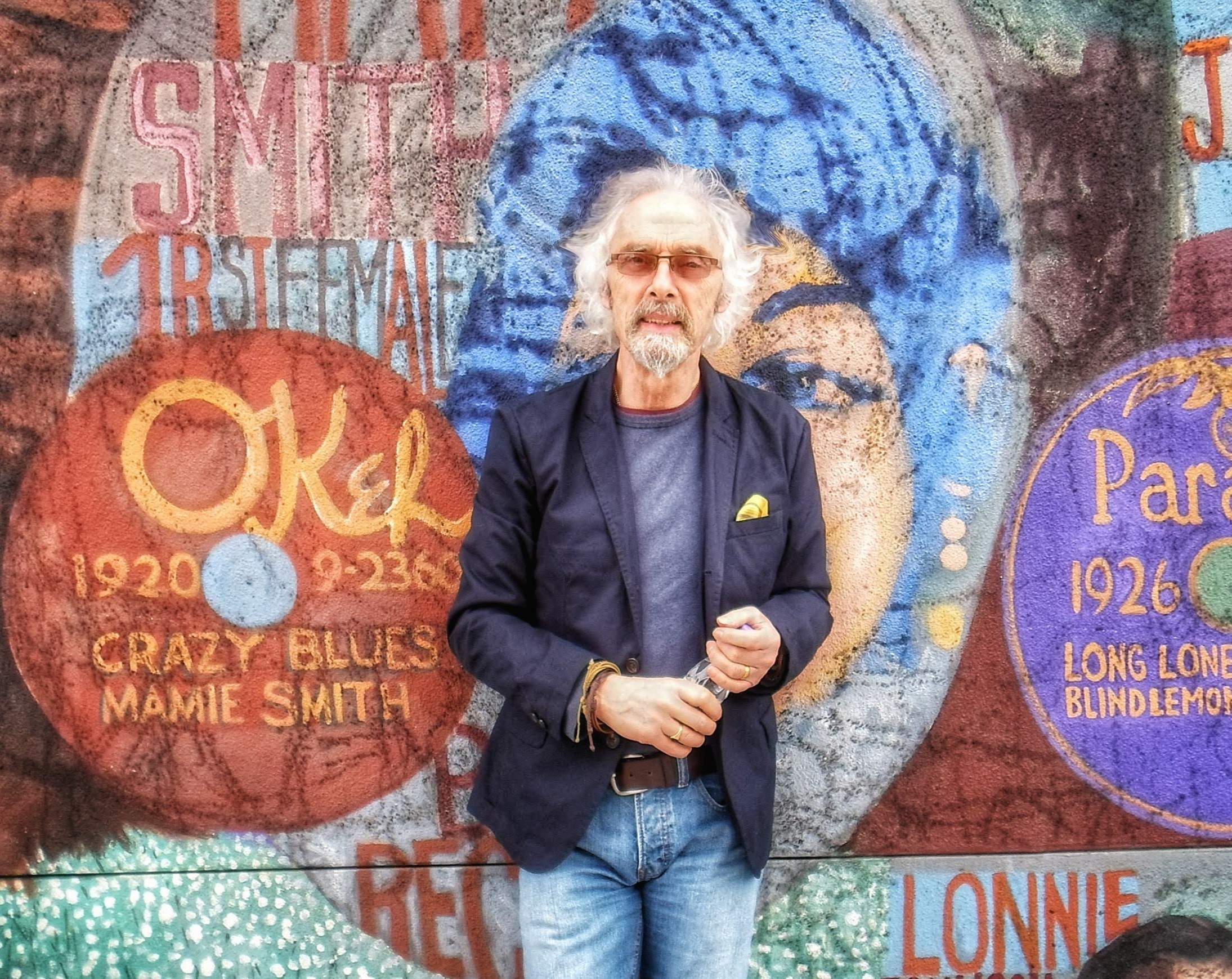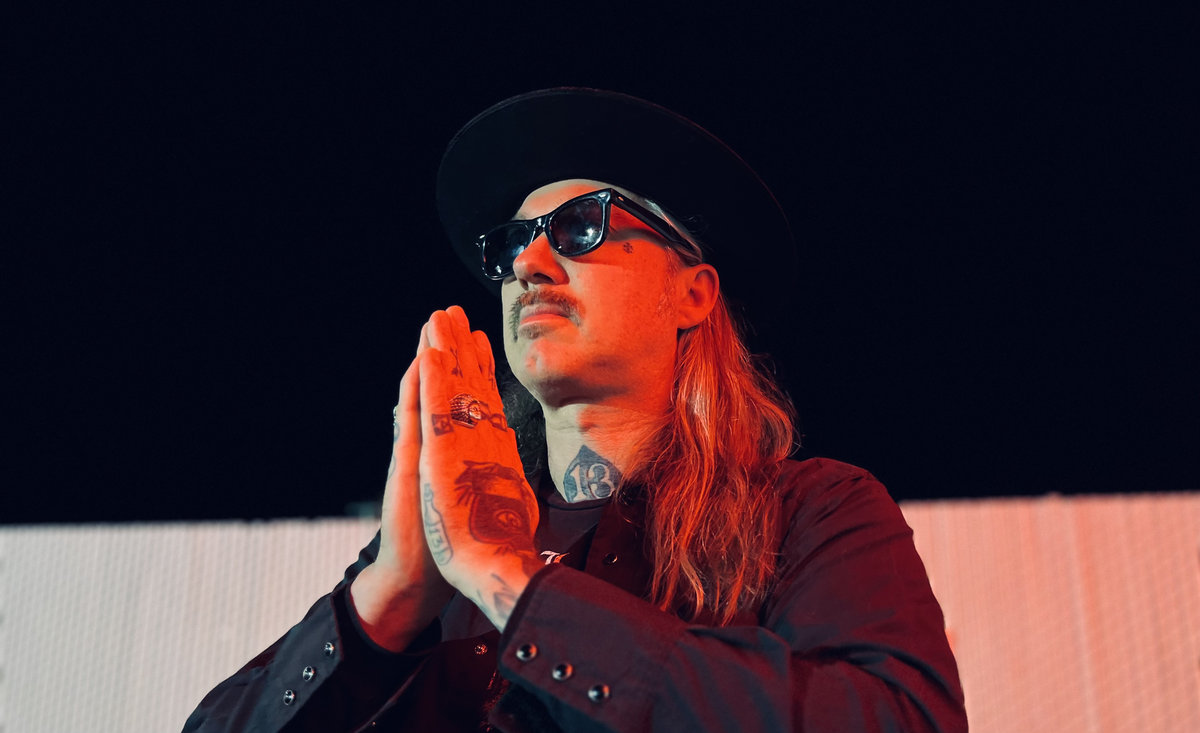Satan’s Satyrs | Interview | New Album, ‘After Dark’
Satan’s Satyrs have crawled back from the depths with their fifth studio album, ‘After Dark,’ proving that their raw, scuzzed-out charm is as unkillable as ever.
Teaming up with Tee Pee Records—New York’s shrine for all things heavy and weird—the band feels right at home among fellow freak rock misfits. Bassist and vocalist Clayton Burgess puts it best: “Even during the band’s recess, I never stopped writing, and the potential to be a vital force again became undeniable.”
Their comeback single, ‘Quick Quiet Raid,’ dropped like a punch to the gut, giving a taste of the gnarly, riff-fueled madness waiting in ‘After Dark.’ This is pure sonic chaos—soaked in Sabbath sludge, blasted with punk ferocity, and all dressed up in psychedelic grime. No surprise, then, that the album’s centerpiece, ‘What the Winds Brought,’ feels like a love letter to their favorite horror flicks, a sinister mix of eerie howls and guitar meltdowns that could make your head spin.
Satan’s Satyrs have always been the oddballs—too riffy for punk bills, too fast for doom, and way too glam for the metalheads. But now, with ‘After Dark,’ they’re embracing that outsider energy with all the venom they can muster, showing that primitive rock still has a place in the dingiest corners of the underground scene. The record drips with howling fuzz and twisted melodies, a true return to the nothing-to-lose spirit of their early days.
It’s the perfect soundtrack for a midnight drive to nowhere—or for when you just need to burn something down. Catch them raising hell on the road in the US this October, and brace yourself for their European takeover in early 2025.
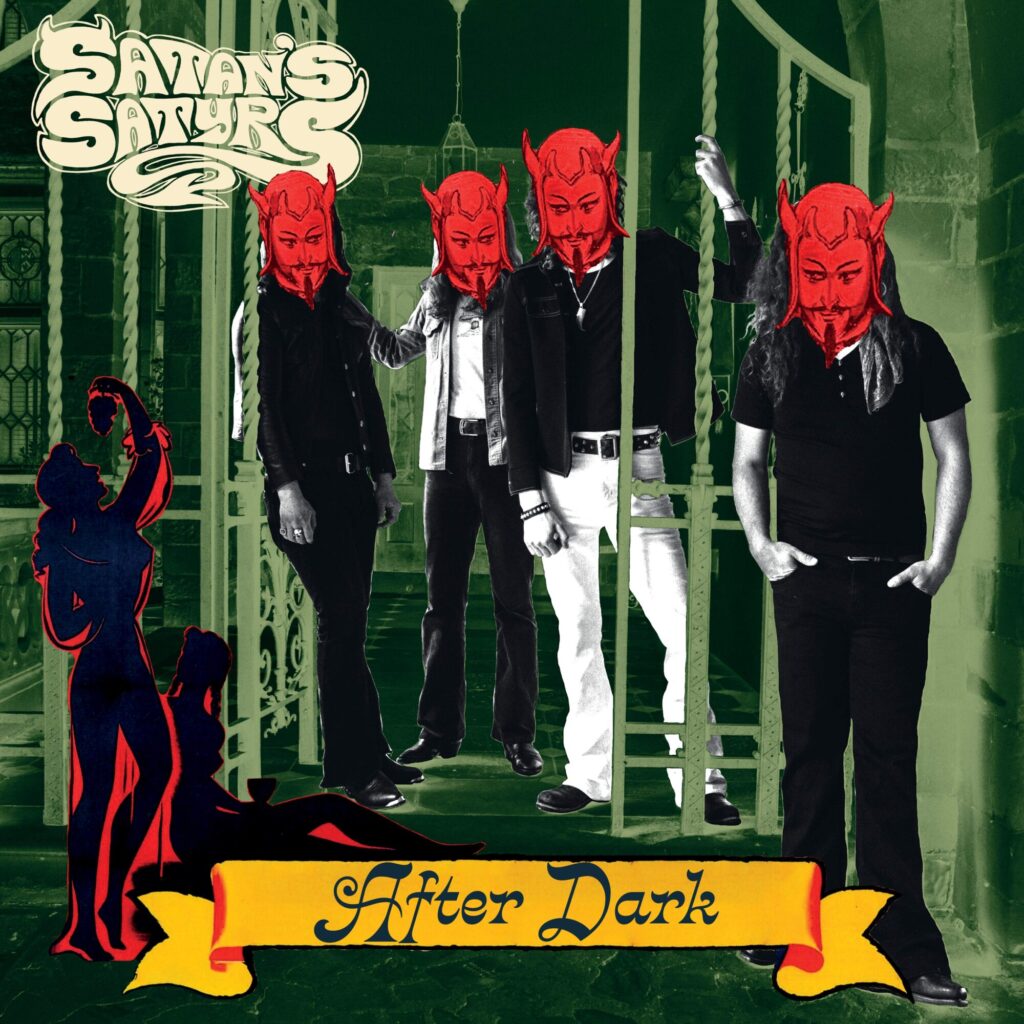
“The band was formed as a vehicle for teenage pothead B-movie escapism”
‘Hellin’ Like It Is’ sounds like the soundtrack to a blood-soaked inferno of primal chaos—what kind of twisted universe were you channeling when you cranked out those volcanic riffs? And, seriously, do you think hell has better acoustics than heaven?
Clayton Burgess: I think ‘Hellin’ Like It Is’ is a good encapsulation of all the eras of the band. It’s got the speed and raw sound of the very early days (actually, the title is a phrase I’ve wanted to use since ‘Wild Beyond Belief!’). But it’s also got the more purposeful sense of songwriting we developed over the years of recording and playing concerts. It’s our “we’re back!” anthem for the old heads and a good introduction for those listening to us for the first time.
Clayton, you’ve described Satan’s Satyrs as the “odd-band-out”—what’s it like being the freaks at the freak show? Is the world finally ready to embrace its true black sheep, or are you still gleefully howling at the moon from the fringes?
I think we’re gonna stay on the fringes, which is fine. I just wanna write music my way and play red-hot shows.
You guys are like the musical lovechild of a gnarly biker flick and a midnight horror movie marathon—how deep does your obsession with exploitation cinema go? Do you see your music as the sonic equivalent of a B-movie bloodbath?
The band was formed as a vehicle for teenage pothead B-movie escapism. We took our name (and artwork) from Satan’s Sadists, the sleaziest biker flick we could find at the time. Werewolves on Wheels was a big influence. Just as that film was a hybrid of the biker and horror genres, we too wanted to be a sort of hybrid of raw, aggressive punk like Black Flag and down-tuned, horror-laden doom like Electric Wizard and Pentagram. Biker film soundtracks were also a big influence. We loved the primitive mind-bending fuzz sounds of Davie Allan and the Arrows.
After a stint in the shadows, what was the moment you realized Satan’s Satyrs needed to rise again? Was it a bolt of lightning, a séance with rock ‘n’ roll ghosts, or just the urge to blow some eardrums out for old time’s sake?
I didn’t want to come back only to play old material. I needed to first prove to myself that I could still write an album before we ever played a concert. Only after we wrote, recorded, and shopped the album around to labels did we announce any shows.
Let’s talk about the resurrection of the band. After splitting up and going through a period of dormancy, what was the first spark that reignited the fire? Was there a moment where the riffs and ideas just wouldn’t leave you alone, demanding to be unleashed? How did it feel to reconnect creatively after a hiatus?
Throughout the hiatus, I was still writing and demoing music but didn’t necessarily have a plan for the tunes. Then I met our current player Morgan here in New York, and he was keen on starting a project together. I would bring out these song ideas, and things slowly started to take shape. Our original guitar player Jarrett came up to visit from Virginia, and once we all got into the rehearsal room together, it clicked. The new material stood up with the Satyrs’ repertoire, so it felt right to continue as Satyrs reborn.
Tee Pee Records has been home to some heavy hitters in the underground rock scene—what unholy pact did you have to make to get the deal? How does it feel to be in the company of other misfits and madmen on that label?
It’s great to be a part of a label that has that long-standing legacy in the underground. I think Tee Pee “got” us more than a straight metal label would. They could appreciate our haphazard sound and varied discography.
“Ramshackle ghost town cemeteries, desolate desert highways, …”
With ‘After Dark,’ you’ve crafted what could be the soundtrack to a doom-laden road trip through the backroads of some Lovecraftian nightmare—what’s the best setting to truly experience this album? Under the influence, in a fog-drenched cemetery, or maybe behind the wheel of a souped-up hearse?
I picture a lot of imagery of the American West for this album. Ramshackle ghost town cemeteries, desolate desert highways, New Mexican bat caves, dried-up riverbeds, and salt flats stinking of decay.
You’ve always been the riffy band on punk bills, the fast band on doom bills, the glam-tinged band on metal bills—what’s the secret to surviving (and thriving) in the murky waters of musical misfitism? And where the hell do you go from here?
We were always a very insular band. Sure, we had our friends in the scene, but our drive to make music came from within, not necessarily to play for or with other people. We were in our own world, totally engrossed by our influences, which were usually not contemporary. Not quite fitting in on bills made us feel that we were on to something.
When Jus Oborn of Electric Wizard says you’re “violent, filthy, ugly, and loud like it should be,” do you take that as the highest compliment, or just confirmation that you’re doing something right? And what’s the next level of depravity you’re aiming for?
That is, of course, high praise coming from someone like Jus. I think he was describing our first album with that quote. Our sound has changed a lot since then, but I’d like to bring back more bombast and savagery into the sound, albeit with a more refined songwriting style. The Blue Cheer and black metal influences are still there for me.
The evergreen vinyl edition of ‘After Dark’ feels like it was ripped straight from some ancient, forbidden collection—what’s the story behind that choice? Is this just another way to lure in the unsuspecting or a nod to the timelessness of what you’re creating?
That was the label’s choice. I think it matches the album cover nicely. I personally always prefer black vinyl, but I think it’s hard to sell records that aren’t “special editions” these days. Physical formats are kind of just novelty items now.
Clayton, you’ve talked before about being deeply influenced by the early days of punk rock and metal, yet ‘After Dark’ seems to transcend those boundaries, embracing a darker, more cinematic quality. Was there a specific film, book, or experience that shifted your songwriting into this new, more immersive realm? How do you see the evolution from ‘Wild Beyond Belief!’ to now?
I’m not sure if there was a specific point where the songwriting shifted. I think coming out of a hiatus meant that we didn’t have any kind of obligation to a record company or even to our fanbase to make a certain type of record. That freedom allowed for space to expand the sound. And during the break, my listening habits shifted to different stuff like Love, B-52s, Santo & Johnny, Ariel Pink, so I’m sure all that worked its way into the songwriting and production.
Regarding the evolution of the albums, ‘After Dark’ reminds me of ‘Wild Beyond Belief!’ in some ways. Both were completely self-produced with basic home recording setups. I wanted ‘After Dark’ to recapture that nothing-to-lose spirit we had on ‘Wild Beyond Belief!’.
You mentioned in a previous interview how you grew up on a steady diet of horror movies and exploitation films. For ‘After Dark,’ did you find yourselves returning to any specific films or directors that hadn’t influenced you before? Is there a movie or scene that perfectly captures the mood of this album?
‘Saltair Burns’ is my sort of “sequel” to the film ‘Carnival of Souls,’ which is my personal favorite. The actual pavilion where the film was shot succumbed to arson in the early ’70s. I imagined a story in which someone would be so captivated by the film and the location that they would take it upon themselves to exorcise the carnival with fire to free the trapped spirit of Mary Henry. Other than that, I wouldn’t say any other songs take direct inspiration from any film. At this point, all those films I grew up on are collaged in my brain and are now a bank of imagery I can pull from. The songs came more from within this time.
The underground music scene has always been a haven for outsiders, and you’ve thrived on the fringes of it. How have the changes in the scene over the past decade affected your approach? Are you finding new kinships with other bands, or is it still a case of blazing your own trail in the wilderness?
I think I’m more out of the loop than ever when it comes to the current scene. I do really like Magick Potion, and I’m sure there is some other exemplary stuff out there. I just try not to focus too much on what my contemporaries are doing because I don’t want their sounds subconsciously creeping into my songwriting. I will say that it seems there is more of an audience for this kind of heavy rock than when we started.
Reflecting on your previous albums, each one feels like a chapter in a grimy, blood-soaked saga. How does ‘After Dark’ fit into this narrative? Is it a continuation, a reboot, or something altogether different? Where do you see the story of Satan’s Satyrs heading next?
‘After Dark’ feels like a Satyrs album to me. That’s why we chose to revive the name after years of disuse. I think it reflects a bit of each preceding album, but the execution and production give it a distinct character in our discography. That’s always been our MO; we never wanted to record the same album twice.
I really like tunes ‘Quick Quiet Raid’ and ‘Mattressback.’ I want to keep working in that direction. I want the sound to be denser, darker, and more blown out, but also have this element of sickly-sweet whimsy running through it.
“In our current set, we have material from all five albums, and I think it flows really well”
In your last interview, you touched on the impact that touring and live performances had on your sound. After some time away, what was it like to return to the stage, and how have your live shows evolved with the new material?
I think the live show is where the songs really come to life. The songs evolve and develop nuances not present on the original recordings, especially with material from our first three albums. Each album has its distinct sound, and I enjoy making all the material sound cohesive in a live set. In our current set, we have material from all five albums, and I think it flows really well.
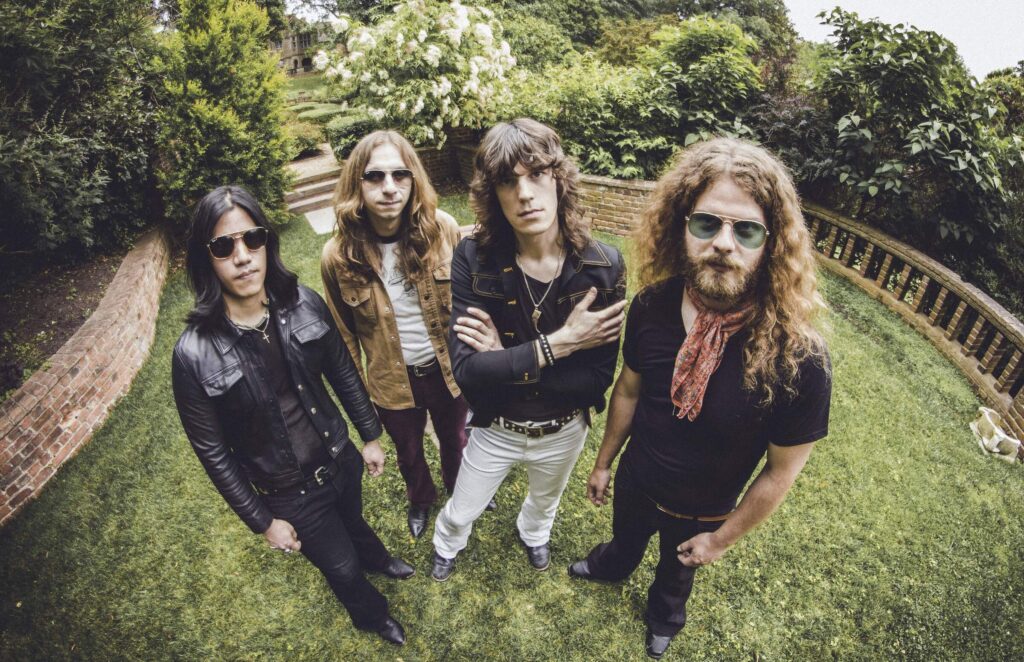
Thank you. The last word is yours.
Catch us on the road in the US in October and in Europe in February and March 2025! Cheers!
Klemen Breznikar
Satan’s Satyrs Instagram / Twitter / Bandcamp
Tee Pee Records Official Website / Facebook / Instagram / Twitter / Bandcamp / YouTube
‘After Dark’ by Satan’s Satyrs | Album Premiere
Satan’s Satyrs interview with Clayton Burgess

